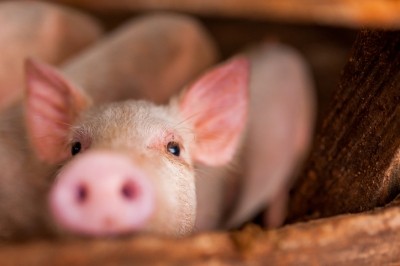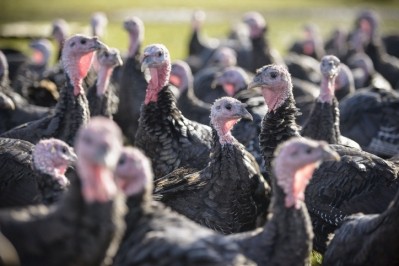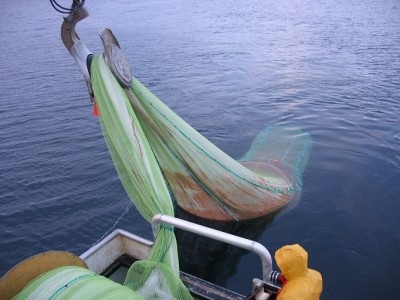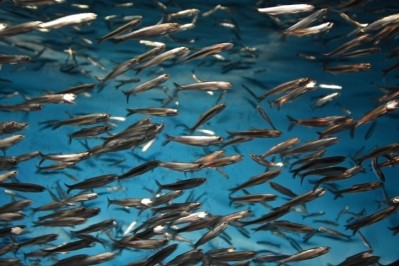special edition: feed protein innovation
Fermented soybean meal may support fish gut health, fishmeal replacement
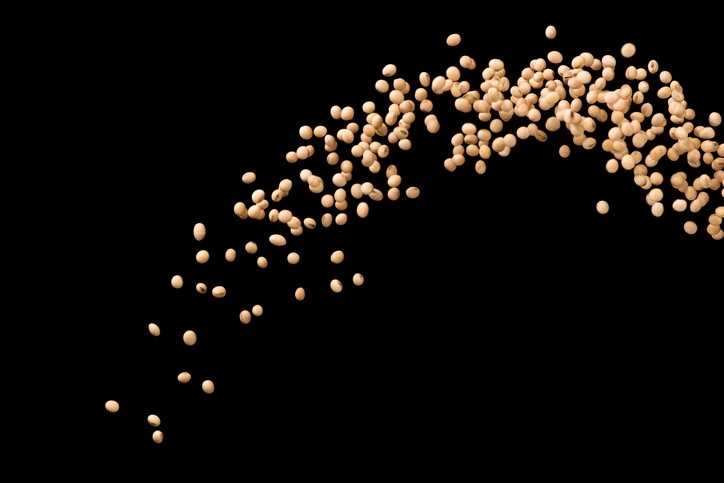
An international team of researchers from China and the US explored the use of bacteria- or yeast-fermented soybean meal (SM) as protein alternatives in the diets of Japanese seabass.
The researchers published their work in the journal of Fish & Shellfish Immunology.
“In the present study, Bacillus pumillus SE5 (BP) and Pseudozyma aphidis ZR1 (PA) isolated from gut microbiota of grouper (Epinephelus coioides) and bullfrog Rana (Lithobates) catesbeiana, respectively, were used for fermentation of SM,” the researchers said.
“Then, the effects of replacing 40 or 80% of FM with SM, BP fermented SM (BPFSM) and PA fermented SM (PAFSM) were investigated on growth, feed utilization, blood biochemistry, innate immunity, digestive enzymes activity, gut morphology and immune-related genes expression in Japanese seabass (Lateolabrax japonicus),” they added.
The researchers found that fish eating high soybean meal or high Pseudozyma aphidis (PA) fermented SM diets had a higher feed conversion ratio and reduced protein digestibility compared to those in the control group, and those on the high SM diet also saw a drop in total antioxidant capacity.
However, fish on the PAFSM diet had higher lysozyme activity than those receiving a SM diet and total antioxidant capacity (T-AOC) produced by fish on the high Bacillus pumillus fermented SM (BPFSM80) and PAFSM80 were similar to the control group fish, they said.
“The findings in this study showed that using the FSM sources, particularly BPFSM, improves nutrients utilization, antioxidant activity and non-specific immune response, and alleviates the damaging impacts of SM on gut health,” they said. “Complementary studies in the future are needed for determination of the optimum replacement level of FM with the two FSM sources.”
Interest in fishmeal alternatives
Fishmeal (FM) is an often-used feed ingredient that adds protein to an aqua feed, the researchers said.
But use of fishmeal is considered a constraint on the expansion of the aquaculture industry as the ingredient continues to increase in price and there remains a finite supply.
Developing less expensive and more sustainable protein ingredients from either a plant or animal source is of interest to the aquaculture industry, they said.
However, the alternative protein needs to be able to replace FM while supporting growth performance.
Multiple ingredients have been examined as potential alternatives, they said. Plant proteins have been of interest for researchers because they tend to be less expensive and available in large quantities.
“Among the plant proteins investigated so far, soybean meal (SM) has shown promise owing to its stable supply, low price, competitive nutritional composition and relatively high digestibility,” the researchers said. “Nevertheless, despite high nutritional value high inclusion level of SM in diets for carnivorous fish is coupled with adverse impacts on growth, metabolism, and health status due to its several drawbacks such as deficiency of some essential amino acids, poor palatability and occurrence of anti-nutritional factors (ANFs).”
Soy-based proteins also have been linked to suppressed immune function in several fish species, they said. Before higher levels of soybean meal could be used in aqua feed, it would be necessary to reduce or turn off the ANF.
Why fermented soybean meal?
Multiple processes have been explored to improve the use of SM in fish feeds, the researchers said. These include soaking, germination, malting, thermal or mechanical processing and fermentation.
“Fermentation has been suggested as the most cost-effective means that improves the nutritional quality of SM not only through biodegradation of ANFs (such as trypsin inhibitors, oligosaccharides and phytic acid), proteins and fibers but also through production of probiotics and prebiotics that might subsequently boost palatability, nutrients digestibility and immune function,” they said.
Additionally, the fermentation process boosts the protein content of SM and appears to improve antimicrobial and antioxidant active while limiting immunoglobulin E immuno-reactivity, they said.
However, as several microorganisms have been used to ferment SM it has been found that the nutritional characteristics of fermented SM (FSM) change depending on what microorganism is used, they said.
It is through that microbes produced by fish “exert cellulolytic and amylolytic activities, and are able to reduce crude fiber, cellulose, hemicellulose and ANFs contents of plant proteins,” they added.
Feeding trial overview
In the feeding trial, fish received one of seven diets formulated with fishmeal or with fishmeal replaced at varying levels with soybean meal (SM), Pseudozyma aphidis fermented soybean meal (PAFSM) or Bacillus pumillus fermented soybean meal (BPFSM) for a period of eight weeks, said the researchers.
“A basal diet was formulated using FM (FM diet), and six other diets were produced by substituting 40 or 80% of FM with SM, BPFSM or PAFSM (SM40, SM80, BPFSM40, BPFSM80, PAFSM40 and PAFSM80 diets,” they said. All diets included squid visceral paste and contained 42% crude protein and 10% lipid.
Fish were acclimated to the laboratory setup for 2 weeks prior to the start of the feeding trial, they said. Fish were weighed and growth parameters were calculated at the end of the trial.
Survival was recorded, and blood samples and the intestinal tract of select fish were collected for analysis at the end of the trial, the researchers said. Spleen samples were taken from a selection of fish to check for immune-related gene expression – including lysozyme and complement C3. Additional fish were checked for whole body composition.
Results
Feed intake and survival were similar for all diets, while growth performance was similar for fish on the control and 40% replacement diets, the researchers said.
However, growth performance dropped as FM substitution increased to 80% for all three trial proteins – although fish on the BPFSM and PAFSM grew better than those on the SM diet.
Fish eating the SM80 and PAFSM80 diets had higher feed conversion ratios (FCR) and reduced apparent digestibility coefficient of protein (ADC) than the control group.
Compared to the control, fish getting the SM80 diet also presented reduced ADC for dry matter and lower whole-body lipid content but higher whole-body moisture.
Fermenting the SM increased the protein content from 50.6% to 58.5% for BPFSM and 58.4% for PAFSM, they said. The process also reduced glycinine content and β-conglycinin.
Serum total protein, glucose and triglyceride levels were not altered by diets, however, there was a drop in serum total cholesterol concentrations for most of the trial diets, they said.
“Serum T-AOC significantly decreased in SM80 fed fish while the FSM fed groups showed comparable values to the FM group,” they added.
“BPFSM40 fed fish showed a comparable catalase CAT activity to the FM group while significantly lower activity was found in the other groups,” the researchers said. “Serum MDA concentration was elevated by increasing FM replacement level … lower serum lysozyme activity was found in SM80 group whereas no significant difference could be found among FM group and those fed FSM.”
The lowest complement C3 activity came from fish on the SM80 diet, with the highest in fish receiving the BPFSM40 diet, they said. Fish, save those on the SM80 diet, had similar lysozyme expression and expression of C3 was comparable for fish on the FM, BPFSM40 and PAFSM40 diets.
Fish on the PAFSM diet had similar foregut lipase activity to the control, while all SM diets had less protease presence and only the SM40 fish had similar amylase activity, they said. In the midgut, only lipase activity was altered by SM use.
Source: Fish & Shellfish Immunology
Title: Replacement of fish meal with Bacillus pumillus SE5 and Pseudozyma aphidis ZR1 fermented soybean meal in diets for Japanese seabass (Lateolabrax japonicus)
Authors: S. Rahimnejad, K. Lu, L. Wang, K. Song, K. Mai, A. Davis, C. Zhang
DOI: doi.org/10.1016/j.fsi.2018.11.009
